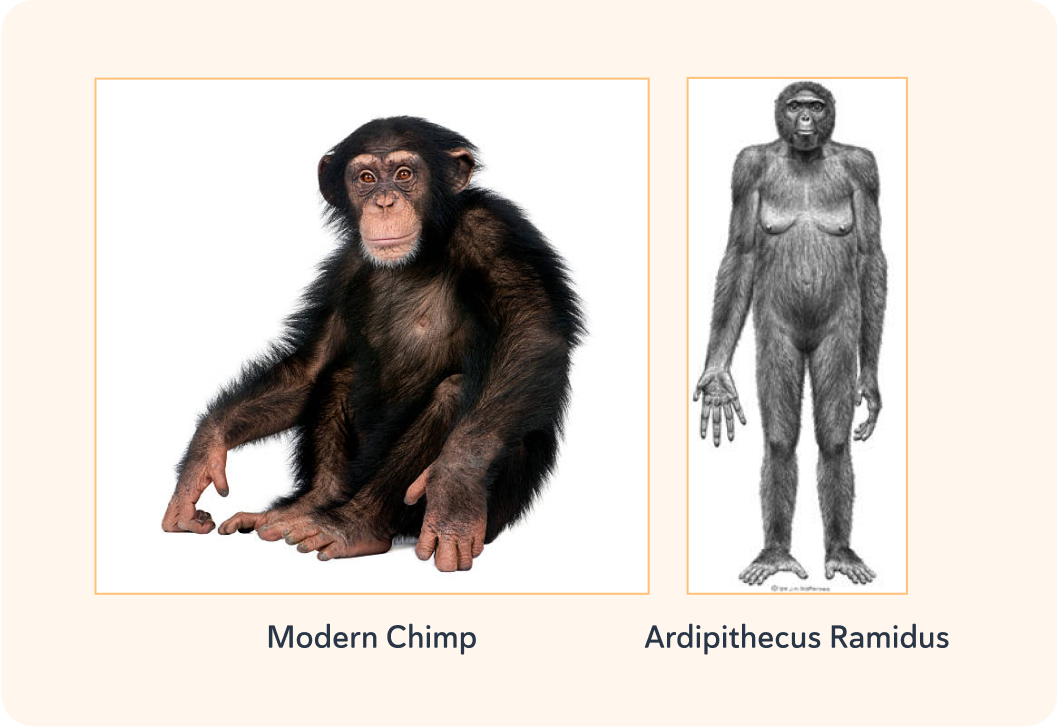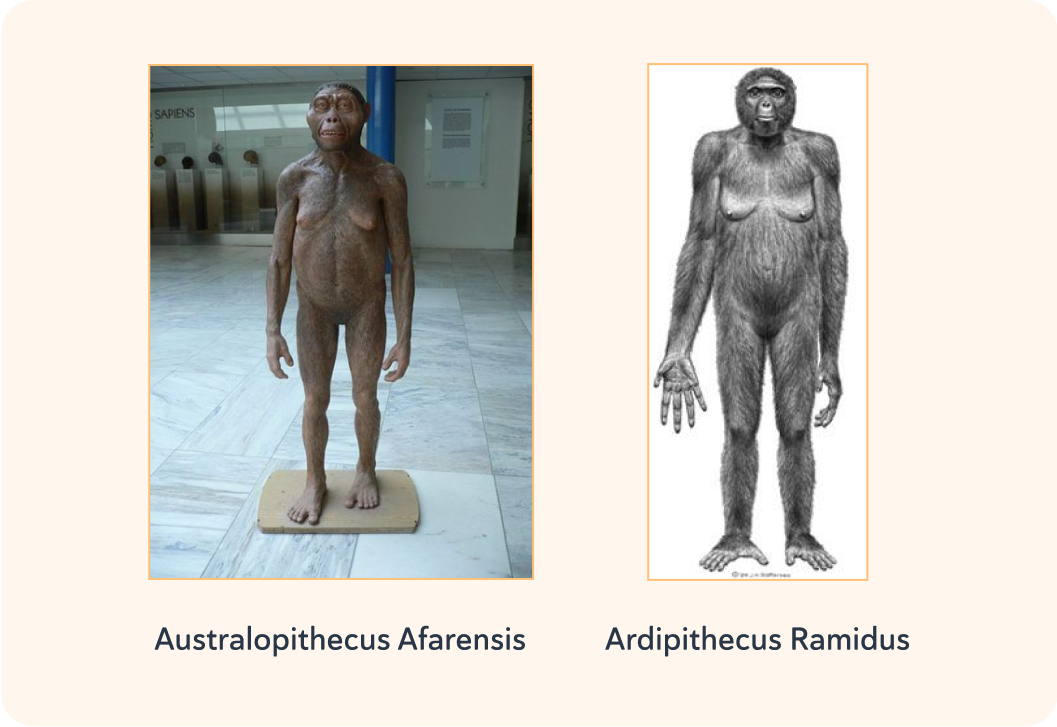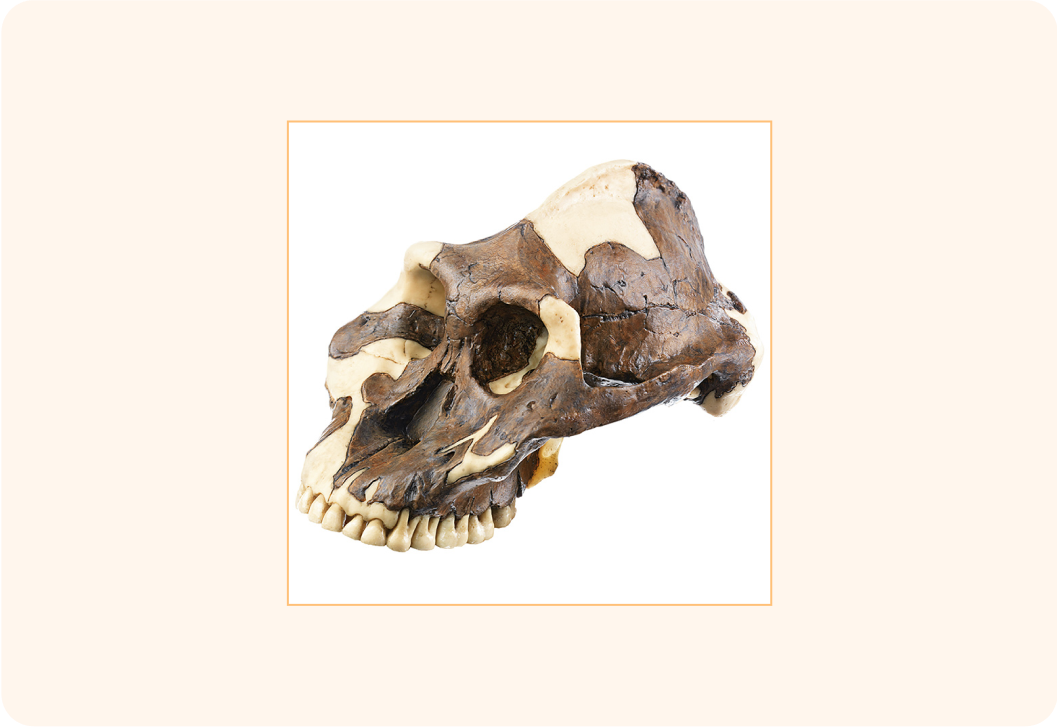YOU ARE LEARNING:
Fossils

Fossils
Evidence of human evolution is shown in fossil records that have preserved remains of life from the past.
What is a fossil?

Fossils provide evidence for changes during evolution, but why do they provide only incomplete evidence? Pick all the options below that you think are correct.

You can select multiple answers
Fossils and other remains can be dated using radio-carbon dating and uranium dating for rocks. We can also find the age by knowing the age of the rocks around it.
The drawing shows a modern chimp alongside an illustration of Ardipitheus ramidus, nicknamed Ardi.
Ardi's fossilised skeleton was discovered in Iran and dates from around 4.4 million years ago!

Compare the feet of the two. What does this suggest about how Ardi used their feet?
A) Good for running. B) Good for climbing. C) Good for walking long distances.


However, Ardi could stand up and walk on two legs (bipedal), unlike a chimp that walks mostly on four (quadrupedal). This suggests that Ardi is...
A) an ancestor of modern humans. B) an ancestor of modern chimps. C) a step in evolution between chimps and humans.


Australopithecus afarensis, nicknamed Lucy, is a fossil of an ancestor of modern man. Do you think Lucy or Ardi are more closely related to modern humans?


Looking at the overall stance and structures, like the feet, it suggests Lucy is more closely related to modern humans than Ardi. What other evidence could be gained from these fossils to show that this is true? Pick all the options you think are correct.

You can select multiple answers
This skull and many other remains where discovered by Mary and Louis Leakey during their life long work looking for evidence of human evolution.
This is the skull of a genus called Paranthropus, one of their hundreds of finds. It dates from about 1.6 million years ago.

Do you think this is closely related to humans? Answer yes, no or not enough evidence.


The sample on its own is rather limited data. The age would help to place it in the right part of our history.
So would a hypothesis as to why it has a ridge on the top of its skull.

Gorillas also have this ridge to support strong jaw muscles. Does this provide evidence that they are in fact related to gorillas and not to us?
A) Yes, they are related to gorillas. B) Yes, they must be related to us as they are only 1.6 million years old. C) Not enough evidence to decide.


The facts don't yet give a full answer.
In fact, scientists still don't all agree!

What sort of additional evidence might help place Paranthropus in its right place in our development?

